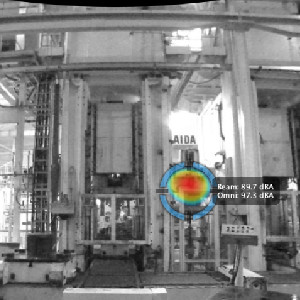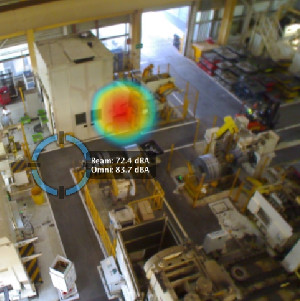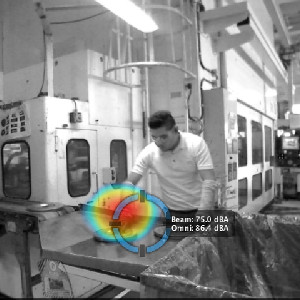


Noise Engineers has an acoustic camera to locate sound sources and characterize them. It is constructed of an array of microphones that gather information and project that on an image. The array is on a portable disk that is connected to a laptop. Videos and still photos can be generated of the noise.
There is a feature to block the noise from a particular spot, so that you can see the noise contribution from other areas. For example, if you were to construct a barrier or enclose one noise source, it will determine the remaining noise level from other sources.
The output shows the spectrum of the noise (octave, third octave, narrow band) and the level. The acoustic camera can be aimed at the ceiling, walls and floor to measure the amount of noise coming from these reflected paths.
With the acoustic camera, we could identify the noise sources and the contribution from various reflective paths. We could also determine the noise level from secondary and tertiary sources. Noise predictions for the implementation of various noise mitigation options was easy.
The third octave data for the various noise paths made selecting treatments easier as well.
An acoustic camera can be very useful for many noise source identification and treatment projects.
Please contact us if you would like an analysis with an acoustic camera.
